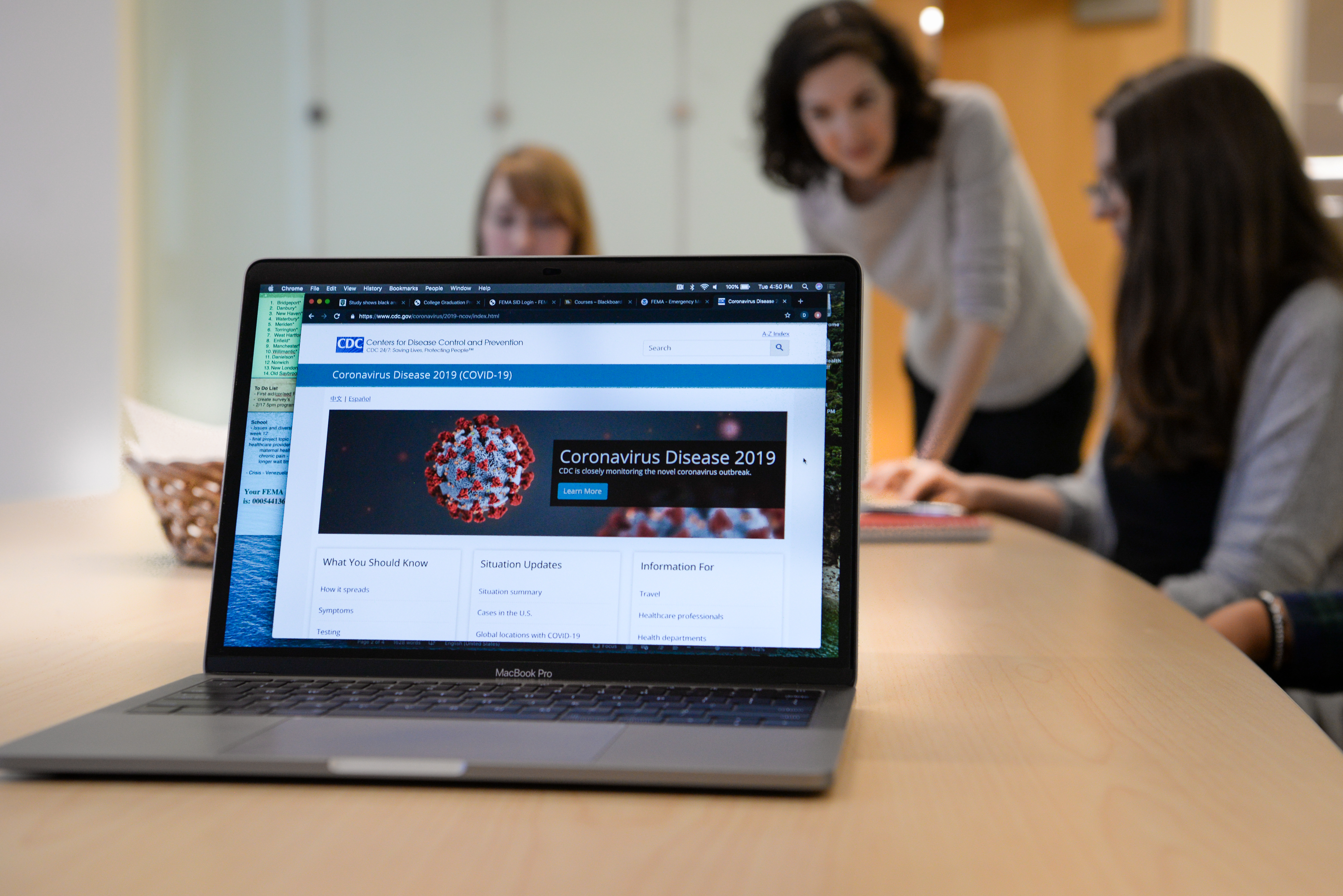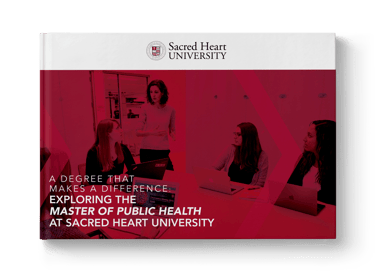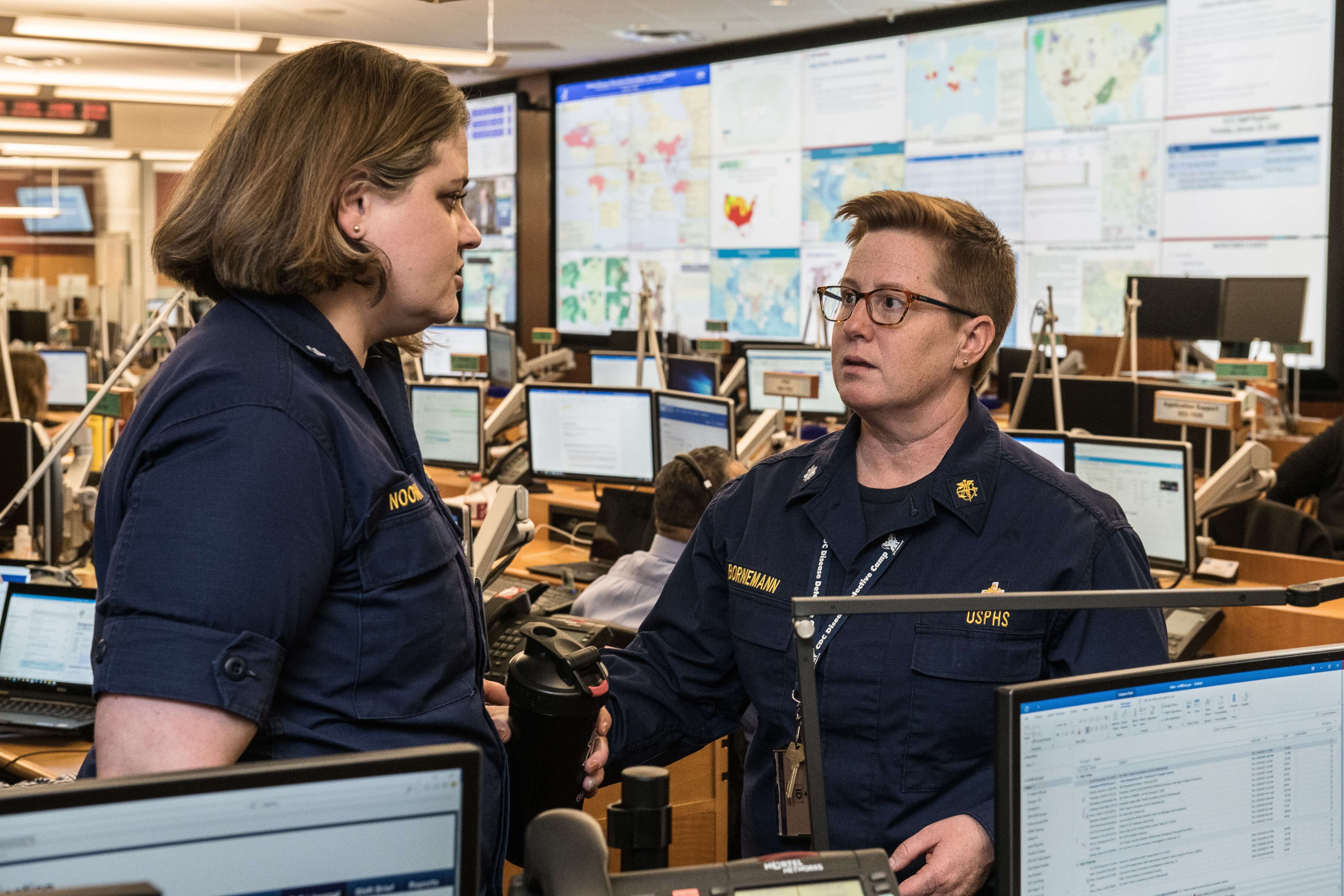During this time of self-isolation and social distancing, people may be going stir crazy, and wondering whether the ban on gatherings will ever end. But everyone must remember to do their part to “flatten the curve,” say Sacred Heart University public health experts.
Read on to learn what else SHU public health experts shared about what we can do to help stop the spread and respond appropriately to COVID-19.
What does ‘flatten the curve’ even mean?
A common illustration that explains the curve shows two hills. The larger hill represents what could happen without protective measures in place during the pandemic: there would be a huge, immediate uptick in cases of COVID-19, the illness caused by the virus. The smaller hill represents the effect of protective measures: the number of cases are spread out and would diminish over time. Protective measures include staying home whenever possible, keeping at least six feet away from others (social distancing), frequently washing hands and cleaning surfaces with disinfectant.
“The health-care system can’t handle the number of people who could be infected,” said Jacqueline Vernarelli, SHU’s director of research education and assistant professor of public health. “Hospitals don’t have the capacity, the beds or the equipment.”
“Instead of having a large number of people infected and needing care all at once, we’re trying to slow the increase in cases. We don’t want to overwhelm the health-care system. We want to make sure health-care workers can take care of patients properly while also lowering the overall number of people infected.”
“Flattening the curve,” could mean the difference between a hospital taking in 100 people infected by COVID-19, instead of 10,000 patients all at once, Vernarelli said by example.
Fight the pandemic with social distancing, self-isolation and good hygiene habits.
If people can’t stay home and isolate because they are employees of companies or organizations that are considered essential, then Sofia Pendley, clinical assistant professor of public health, urges social distancing. The primary way that the illness spreads is through the transmission of respiratory droplets. “These are the flecks of fluid that are released when people spit or cough, so if you physically distance yourself from other people, you’re less likely to breathe that in.”
Why is it spreading so fast?
Vernarelli said the structure of this particular virus makes it easy for virus cells to gain entry into our body. “The structure is also why we stress good hand washing technique,” she said. “When you vigorously scrub your hands, you are destroying the virus cells’ outer membrane.”
This particular coronavirus, COVID-19, is a new virus, Vernarelli emphasized. “No one has ever had it before; no one has been exposed to it. Our bodies have never seen it before, and they don’t know how to fight it. This is why it is so contagious.”
What if I get sick?
“Call your doctor,” Vernarelli said. “Your doctor is going to tell you where you can get tested if he or she thinks you are showing signs of COVID-19.”
Vernarelli said people should self-isolate at home, stay away from family members and roommates and monitor symptoms. “Once your doctor directs you on where to get tested, you’ll get the results back in a few days, so in the meantime, stay home.” She said if the test does come back positive, continue to isolate yourself and follow a doctor’s instructions. If, however, you are experiencing respiratory issues, can’t breathe or have difficulty breathing, she said, then it’s time to call emergency services.
How long are we going to have to stay home?
Pendley and Vernarelli said there are too many unknowns to be sure.
“If, at the end of this, the media is saying this was a big to-do over nothing, then everything worked out the way it should have,” Pendley said.
“We should feel that this was all for nothing,” Vernarelli said. “That means we stayed safe and listened to health professionals and our government officials.”
“Connecticut is regionally located in a major hot spot, being so close to New York and New Jersey, which have high numbers of cases,” Pendley said. “Everyone is working together to make sure the virus is not spreading even more. If the rules are relaxed too soon, then we get this ballooning of COVID-19, and then there’s a longer-term impact.”
Why shouldn’t I panic?
“This is distressing; there’s so much going on, but you don’t want to be overwhelmed. There are things you can do to protect yourself and your family,” Vernarelli said. “You have to remember that, if you have good hygiene and practice social distancing, you’re taking control and doing everything you can to protect yourself from COVID-19.”
“Every single person can be active in their own protection … it may feel like hiding, but this is how we fight the virus. That’s the correct response,” Pendley said.
To prevent feelings of anxiety and depression, Pendley and Vernarelli suggest taking advantage of the good weather and going for walks and runs (remembering to keep your distance from others who might also be outside). Being in nature is calming, and exercising is good for people’s immune system and overall health, they said.
If you want to learn more about one of the many types of professionals on the front lines of the fight against this virus, we encourage you to check out our comprehensive resource — A Degree that Makes a Difference: Exploring the Master of Public Health at Sacred Heart University.
Download the guide today, and learn about a degree that will equip you to search for solutions during a disease outbreak.
 Note: This article was originally published here.
Note: This article was originally published here.









